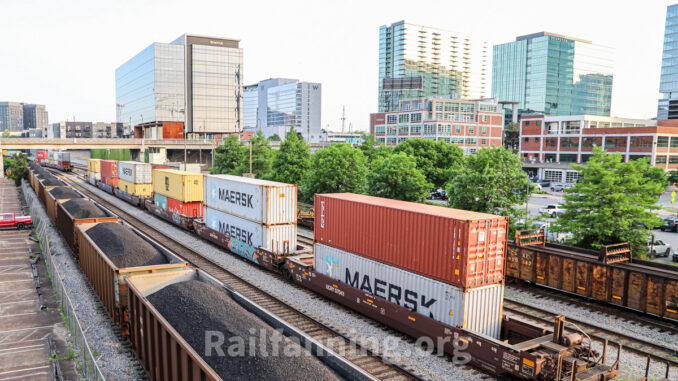
The Association of American Railroads is pushing back on a Transportation Research Board study on operating freight trains longer than 7,500 feet.
The study found the heightened safety challenges and operational demands of long freight trains require coordinated actions from major freight railroad companies, the Federal Railroad Administration and Congress.
According to AAR, railroads have safely managed trains of this length and beyond over the past 80 years. At the same time, the industry’s safety record has dramatically improved, with the latest data showing the Class I mainline accident rate down 42% since 2000.
“Safety is at the center of every decision on the railroad, and train length is no different,” said AAR President and CEO Ian Jefferies. “As operations continue to evolve, railroads are pulling on three key levers – technology, training and infrastructure – to further enhance safety and reliability. Railroads’ goal will always be delivering for our employees, communities and the economy – and to do it safely every day.”
AAR said railroads consider several factors, including commodity mix, track conditions and terrain, when determining train makeup and length on every train across the 140,000-mile rail network. However, processes may differ slightly across carriers.
Many railroads rely on advanced “train builder” algorithms that analyze various operational factors, guiding car placement and ensuring trains operate safely, AAR said. Improvements to train building best practices have delivered stronger safety results in recent years, and AAR said they will continue to be an area of intense focus for the industry.
Railroads also strategically deploy locomotives at key points throughout the train using a method known as distributed power, a common practice that railroads say help manage in-train forces to reduce operational risk. In distributed power trains, locomotives are connected by closed communications systems that maintain a constant connection to the lead locomotive and its highly qualified engineer.
As operations change, so do infrastructure needs, AAR said. To accommodate longer trains, railroads continue to invest over $23 billion annually into infrastructure, including adding and extending sidings. These improvements increase the fluidity of rail traffic and reduce the impact on local communities.
Maintaining network safety is a continual process that requires railroads to regularly review and adapt their operations. To support the TRB’s thorough review of train length issues, railroads provided substantial amounts of data, delivered numerous presentations to the committee and provided constructive feedback on the findings.
According to AAR, the TRB study has several shortcomings, and the group said it arbitrarily focuses on trains exceeding 7,500 feet, despite acknowledging a lack of consensus on the appropriate definition of a “long” train. The study followed a Congressionally defined threshold without uniform agreement on its appropriateness.
Additionally, the report notes the committee was unable to draw conclusions about potential community impacts of emission reductions or from occupied crossings by longer trains, AAR said.
Ultimately, the TRB study does not demonstrate data supporting any claims that manifest trains exceeding 7,500 feet pose additional operational safety risks, AAR said. The association added that an arbitrary limit on train length would risk disrupting the nation’s supply chain through increased network congestion and undermining environmental priorities.
For example, AAR analysis found that restricting train length to 7,500 feet would increase U.S. mainline freight train fuel consumption by 13% or an additional 423 million gallons of fuel annually. This would be the equivalent to the annual emissions from about 930,000 cars.

